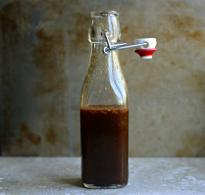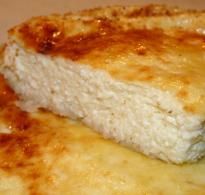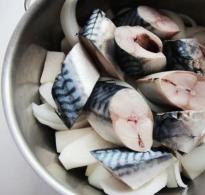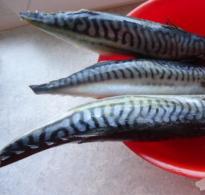Rapeseed honey: benefits and harms, effects on different body systems.
Rapeseed is an excellent source for honey. This plant is of high agricultural value, it is sown in large fields, which are used part-time in order to collect nectar. The resulting rapeseed honey has high medicinal and nutritional characteristics. No wonder it is also called "live".
Rape crops belong to the cruciferous family. The origin of this plant is not known for certain, but what is known for sure is that it is not wild-growing. Scientists believe that rapeseed as an independent culture appeared more than four thousand years ago. It has an extremely high productivity and is therefore widespread.
Rape blooms for a month, from mid-May to late June. It has many inflorescences, consisting of four-petalled, bright yellow flowers. Its root system has a tap type of structure, and it is a good green manure.
Its cultivation is most often for fodder purposes. It contains essential oils in very high quantities and therefore rapeseed is often used in the preparation of biodiesel. In the most large quantities it has recently been grown for this very purpose. It goes without saying that the open spaces dotted with raw materials are a great place for owners of a bee apiary. For bees, rapeseed has a very high performance and allows you to get about 50 kilograms of honey from one hectare.
Composition and properties of rapeseed honey
High nutritional characteristics Rapeseed honey distinguishes this product from other benefits of bee production.
- Appearance and smell. The color is pale yellow, light. The smell is sweet, floral, slightly bitter.
- Taste characteristics. Delicate taste with pronounced sweetness and some bitterness.
- Structure. Candied honey becomes paler in color, has a fine-grained structure. The thick consistency significantly increases the time for pumping honey out of the combs. Sometimes it is more than 24 hours. Experienced apiary owners prefer to pump honey from completely sealed combs.
- Peculiarities. Natural rapeseed honey is poorly diluted with water.
The composition of rapeseed honey deserves special attention. It contains moisture, up to 20%. Sugar - more than 80 percent: glucose, fructose, dextrin. It is the content of dextrins in this variety of honey that is the highest and it is 7 percent more than in other varieties. The composition of rapeseed honey also includes many organic acids, minerals, vitamins, and biologically active substances.
How to check the quality (naturalness) of rapeseed honey?
Honey, and even more so rapeseed honey, is a valuable and beneficial product for human health, lovingly created by Mother Nature. But in order to benefit from it, and not harm, it must be natural. Various falsifications of unscrupulous sellers are fraught not only with wasted money, but can also often cause problems regarding the health of the consumer.
Unfortunately, rapeseed honey is not so popular, but fakes for it are quite common. To buy high-quality honey, you need to be careful about choosing a seller, as well as carefully study the characteristics of the proposed product even before giving money for it.
- Correct natural honey from rapeseed it crystallizes quite quickly, so it is better to buy it in a crystallized form. Often the buyer wants to get the most fresh product. Unscrupulous sellers diligently use this and, in order to get honey of the desired consistency, dilute it and melt it. This leads to the fact that the product not only loses its beneficial properties, but also receives substances that are toxic to health in the composition.
- In the presence of foreign impurities, honey from rapeseed gets a heterogeneous consistency and sediment. Beekeepers often feed bees with antibiotics. If this was during the time when the striped workers were diligently collecting honey, then they certainly get into the finished product.
It happens that the owners of the apiary practice feeding the bees with sugar. This increases the amount of honey produced. Such honey is not of particular benefit to the consumer.
The benefits of “live” honey are hard to dispute. He is credited with simply unique and extraordinary healing characteristics. Why is he so useful?

- Removes manifestations of toxicosis in pregnant women.
- Helps restore the balance of hormones in the body.
- It is used externally to treat wounds or ulcers. It has a hemostatic, disinfecting effect. Promotes inflammation and healing.
- Increases the body's defenses and removes toxins.
- Helps to normalize the functioning of the liver and the secretion of liver enzymes.
- Improves bone tissue regeneration.
- Contributes to the normalization of metabolism in the body.
- It has a positive effect on diseases: atherosclerosis, anemia, obesity.
- It has a positive effect on the composition of the blood.
A positive effect on the balance of hormones, the ability to activate metabolic processes are those special features that give it a number of advantages compared to other types of honey.
Contraindications and precautions
It should be noted that rapeseed honey is useful only for those who do not suffer from individual intolerance to this product. Having previously allergic reactions to rapeseed honey, you should not use it at all. And for those who once received unpleasant consequences due to the use of honey of other varieties for food, you must first determine whether the product will cause undesirable manifestations in the end.
To receive from quality honey benefit, you must definitely use it correctly, having read the precautions in advance:

- Honey should not be consumed after heating to a temperature above 60 degrees. It can not only lose its beneficial properties, but also cause harm.
- If one day a different kind of honey caused allergic reaction, then other varieties should be treated with caution.
- Consuming honey can be detrimental to dental health. Therefore, it should be washed down with water or simply rinsed out your mouth after use.
- It is not recommended to give honey to children before they reach the age of two.
- At overuse honey in food, you can easily get extra pounds.
- Honey stored for more than a year loses its valuable properties. healing properties and is a simple treat.
- It happens when poisonous pollen from some plant species gets into the honey collected by bees. Thus, “drunk” honey is obtained, the use of which can lead to a deterioration in well-being.
- For allergy sufferers who have had an individual reaction to plant pollen (pollinosis) in the past, the consumption of honey is not recommended.
- Caution should be taken with honey for people suffering from diabetes and overweight.
When mixing honey with liquid, milk, tea or water, their temperature should not exceed 60 degrees. Maximum allowable rate honey per day is approximately 120 g. To get maximum benefit from the product, it is better to eat it on an empty stomach.
Traditional medicine recipes
Most often, honey is used to treat colds. Moreover, it is used not only in an independent form, but also as part of recipes intended for treatment.
- From a cold. Compositions based on honey and aloe are very popular. To prepare such a medicine, you need to take aloe juice and honey in a ratio of 1: 5 (for 5 parts of juice, 1 part of honey), combine in one container. Drink a teaspoon 3-5 times a day until recovery. Keep refrigerated.
- With kidney disease. For 2 parts of honey, you need to take 3 parts black radish, crushed on a grater. Mix. Take a teaspoon at bedtime and 30 minutes before meals.
- With cardiovascular diseases. Take 100 g of honey, juice of half a lemon, 50 g of raisins and 50 g of dried apricots. Rinse dried apricots and raisins well and chop. Mix all ingredients. Take a tablespoon 2-5 times a day for a month.
- With lung diseases. Take half a glass of honey, fresh lard 100 g, butter 100 g, a tablespoon of cocoa, a tablespoon of aloe. In the cooled melted lard and butter, add cocoa, honey and juice. Mix thoroughly until smooth. Store in the refrigerator in a tightly sealed jar closed lid. Apply 2 times a day. In warm, up to 60 degrees milk, add a tablespoon of medicine and drink instead of tea until recovery.
- With gastric and duodenal ulcers. Mix 20 g of honey with a glass of juice white cabbage. Prepare immediately before use. Drink in the morning, after waking up, before the first meal.
How to store honey?
Rapeseed honey should be stored in a dry, dark and cool place, but not in a refrigerator. The container can be made of glass, ceramic or clay. So that honey does not turn sour, does not absorb foreign aromas, it must be stored with a tightly closed lid for storage.
Rapeseed honey is widely distributed and available in European countries. On the territory of Canada, about 50% of all beekeepers in the country are engaged in the production of rapeseed honey. In the countries of the post-Soviet space, this variety is not very popular. Therefore, if it comes across for sale somewhere, it must be of high quality, you just need to try it in order to appreciate its useful properties.
Video: top 5 selling honey varieties
In Europe, rapeseed honey is popular, but in our country, many do not realize its importance. The benefits and harms of rapeseed honey is a topic that requires special attention and detailed review. Rapeseed nectar is valuable, rich the most unique properties confirmed by scientists.
He is called " white honey» because of the light color. This variety– a rarity due to the irregular sowing of rapeseed and rapid crystallization. Even if the beekeeper took the combs from the hives on time, pumping out the nectar is problematic: it remains liquid for four weeks.
Important! Harvesting takes place in July, so liquid rapeseed honey cannot be bought in August. The real one can only be purchased in bars, everything else is a fake.
Taste and color of rapeseed honey
Fresh white honey. Having crystallized, it has a fine-grained structure. Becomes thick and opaque. The aroma is harsh, but pleasant. Has a sweet sugary taste, slight bitterness. Insoluble in water. Liquid on sale is difficult to find due to instant crystallization.
Composition and calorie content of rapeseed honey
Main composition: glucose and fructose. Diabetics can be harmed - they should eat other varieties that have more fructose. Feature: water content of 20%, which contributes to sourness in case of improper storage.
Value: the presence of 300 minerals and trace elements. Contains 320 kilocalories per 100 g, carbohydrates - 80%, proteins - 1%, fat content - 0%. Useful properties are determined by the rich composition.
Benefits of rapeseed honey
It is called "life-giving spring". It contributes to the normalization of damaged tissues, frees the body from poisons and toxins. Therefore, it is especially recommended for people living in areas with poor ecology.
The value is determined by the content of vitamins and useful substances of which it is composed. It is especially rich in vitamin B, which has a good effect on the nervous system and metabolism. Regular use improves the condition of the heart, blood vessels, stomach. It is used in cosmetology, medicine, as it has a restorative, analgesic, warming effect. The properties, disadvantages and advantages of rapeseed honey are investigated.

For the nervous system
This variety strengthens the nerves. It has a relaxing effect, relieves insomnia, overwork. Very helpful for kids. Acts as a sedative. People who consume it regularly are calmer and less prone to stress. Their attention is more concentrated, memory improves, thought processes accelerate.
For the cardiovascular system
The bee rapeseed dessert is good for the heart:
- strengthens the muscle;
- improves blood flow;
- eliminates sudden pressure drops;
- strengthens capillaries, blood vessels;
- lowers cholesterol.
For the digestive tract
The benefits for the stomach of rapeseed honey are enormous. Regular intake is necessary for gastritis, ulcers, acidity of the body. Useful for intestinal microflora, has a hepatoprotective and choleretic effect. Frees the body from slagging, toxic substances, poisons. Useful for diarrhea and constipation.
With lesions and diseases of the skin
Rapeseed dessert is beneficial in the treatment of skin injuries. Cuts, burns, bruises, bites heal faster when using dressings from it. It has a regenerating effect in dermatitis, acne and abscesses. With complex treatment, it relieves psoriasis, eczema.
With inflammation in the oral cavity and larynx
The properties are beneficial for colds. Honey with hot milk is a proven remedy. Suitable for adults and children. Thanks to its medicinal properties, it relieves pain, thins sputum. Great remedy From cough. Useful for stomatitis: you need to dissolve in your mouth.
How to use rapeseed honey for medicinal purposes
The benefits of rapeseed honey for the human body are undeniable, but you need to know the rules for taking it. To improve metabolism, you need to take it in the morning on an empty stomach with water. Consume 15-20 minutes before meals. Lemon juice added to the drink will help pregnant women fight toxicosis. The recommended dose for adults is 100 g, for children - 20–50 g. It will not harm when combined with drugs.
Traditional medicine recipes with rapeseed honey
Useful properties of bee dessert help to recover from a number of ailments.

With a cold. Dissolve honey in hot water and then drink. Such a drink will benefit and help to recover.
To improve immunity. Melt 250-300 g of honey and cook for 10 minutes over low heat. Remove foam, strain. Add chopped wild rose - 50 g. Boil again for 1 minute. The medicinal rapeseed dessert benefits when taken orally or added to tea.
With rhinitis. In hot water (100 ml), dilute 1 tsp. honey, add 2-3 drops of eucalyptus or mint oil. Breathe in the healing steam, covered with a blanket. Then have a drink healing drink. Useful properties will quickly relieve the symptoms of the disease.
To increase potency
Grind the kernels of 10 walnuts, add 1/2 tbsp. boiled water. Leave to infuse for 2 hours. Then pour melted honey - 4 tbsp. l. Take 1 tbsp. l.
Treatment of impotence
You need young nectar. Melt 250 g, combine with warm water- 500 ml. Dip a towel into the solution and make a compress below the waist. Repeat every evening for 2 weeks. This procedure will not harm, only benefit in solving this problem.
The use of rapeseed honey for weight loss
Nutritionists advise overweight people to replace sugar with honey, as it has fewer calories. Use bee nectar in limited doses, otherwise harm to the body is inevitable. Can be sucked to feel full.
Rapeseed honey in cosmetology
This variety is indispensable in cosmetology. It has a good effect on the skin, as it has a regenerating, antiseptic, warming effect.
The properties of bee nectar are indispensable in the preparation of masks at home. Natural product helps women stay young, attractive.

Face masks:
- For dull skin. boiled cereals mixed with honey, applied for 25 minutes, then washed off.
- From oily sheen, rashes and lightening. The honey is squeezed lemon juice. Apply the mask for 15-20 minutes, then wash off.
Hair masks:
- From hair loss. Rub the onion, add 4-5 tbsp. l. honey. Apply evenly to the roots, hold for 30 minutes, then rinse with water. To eliminate the smell of onions, essential oils are added to the rinse water.
- To reduce oily hair. Mix honey with 2 egg yolks. Leave on hair for 30-60 minutes, rinse.
Also useful for massage. It does not harm the body. Honey massage cleanses the skin, removes toxins.
Harm of rapeseed honey and contraindications
Sometimes honey can be harmful to human health. For example, if bees collect nectar in fields that are excessively treated with pesticides that can get into the final product. Also, after wintering, some beekeepers treat insects with antibiotics that accumulate in dessert. These factors can affect the composition and properties, and the effects on the human body are difficult to predict.
Important! Do not add honey to very hot tea- at temperatures above 40 ° C, harmful carcinogens are formed in it. Therefore, it is better to use it separately: after it dissolves, you need to swallow it, and only then drink it with liquid.
In order not to harm the body, but only benefit, it is imperative to establish before taking whether the product is suitable, whether there is a tendency to allergies. It is better to consult a doctor. Do not give children in unlimited doses - it provokes caries. Diabetics should use honey with caution. During pregnancy hormonal disruptions bee nectar can be harmful - cause allergies. Therefore, you need to be more careful.
Attention! The consequences of taking with allergies: itching, rash, rhinitis. You must first find out the contraindications so as not to expose the body to complications.
How to check rapeseed honey for naturalness
In order to recognize rapeseed honey when buying, you need to know what kind the natural one should have:
- color - white, light yellow;
- taste - sweet, with bitterness;
- thick, slightly soluble;
- liquid - after pumping out, it crystallizes in 2–3 weeks.
Fresh product can only be bought in July. Naturalness is determined as follows: you need to drop it on a blotting sheet - if after a minute a wet spot is visible on the reverse side - the product is not natural.
How to store rapeseed honey
When purchasing a product, you must remember that it is subject to fermentation. Therefore, it is not recommended to stock up on the product so that it does not deteriorate.
It is necessary to observe the storage conditions of rapeseed honey. Keep the bee product in a glass or ceramic container with a tightly closed lid. When exposed to sunlight, it will turn sour and lose its smell.

Conclusion
At present, the benefits and harms of rapeseed honey have not been fully studied and scientifically proven. But the fact that it is widely used in various fields and is rich in useful properties speaks of the value of the product. The main thing is that the use helps a person get rid of many diseases, stay healthy, young, and vigorous.
Was this article helpful to you?
Rapeseed honey is not familiar to everyone. A herbaceous plant, from which nectar is collected for it, serves as fodder for livestock and is used to obtain vegetable oil. Contrary to the opinion of many, rapeseed is a good honey plant, it makes a tasty and healthy product.
Rapeseed honey
Until now, many beekeepers do not dare to put beehives in the fields where they grow yellow flowers having a very sweet aroma. They consider the resulting product to be of low quality and believe that it will not find its buyer. This opinion is erroneous, since experienced beekeepers do not attach importance to where insects carry nectar from. The most important thing is to get a tasty product at the exit.
Rape belongs to the cabbage family and is considered safe. From its flowers, bees collect more than eight kg of nectar per day. Rape blooms can be observed in late summer and early autumn, which allows you to get a late harvest. When nectar turns into honey, it acquires:
- bright yellow color with small whitish patches;
- special aroma and tart sugary-sweet taste;
- the most dense structure;
- "candied" 3 weeks after receipt;
- slight bitterness after standing;
- rapid souring (stored under control in glass containers);
- poor solubility in water.

candied honey
For production in large quantities, beekeepers place significant apiaries near rapeseed. It is this honey that can be found on the shelves of supermarkets. It quickly crystallizes already in the hives, so it can seriously harm the bees.
Attention! Rapeseed honey should not fall into the framework for wintering, as this will lead to the death of the bee colony.
In this regard, beekeepers eschew rapeseed blooms near the hives in autumn, because the nests are already prepared for winter. Composition this species slightly different from flowers. It consists of:
- protein fractions;
- carbohydrates (fructose and glucose);
- enzymes (dexins, etc.);
- the minimum amount of water (no more than 17 g);
- vitamins B (pyridoxine, riboflavin, pantothenic, nicotinic and folic acids);
- vitamin C;
- minerals (potassium, calcium, phosphorus, magnesium, zinc, iron, sodium).
Honey contains 305-330 calories per 100g of product.
Useful and medicinal properties
Despite the indication in literary sources of low value, the properties of rapeseed honey are the most useful, since the product:
- satisfies hunger when consumed in small quantities;
- helps athletes to restore physical strength;
- has a good effect on the nasopharyngeal mucosa, contributing to the appearance of expectoration;
- used as a diaphoretic warm milk: so he gives up valuable substances faster;
- used at a temperature during a cold;
- stabilizes the nervous system, ensures healthy sleep;
- contributes to the rapid healing of wounds, ulcers and burns when applied externally;
- is part of shampoos, tonics for the face, contributing to the rejuvenation, restoration and strengthening of cells.

Helps athletes regain physical strength
Indications and contraindications for use
Experts often recommend rapeseed honey for kidney problems, osteoporosis. At regular use the product regenerates and increases the elasticity of the walls of blood vessels. Honey helps protect the spleen, pancreas and liver from various diseases. The polyphenols that are part of honey (antioxidants that prevent the development of cancer and reduce cholesterol levels in the blood).
Rapeseed honey is considered the most non-allergenic. It promotes:
- cleansing the body of heavy metals;
- strengthening the immune system;
- elimination of toxins;
- improvement of cardiovascular activity;
- cleansing the intestinal microflora;
- normal absorption of food;
- increase in hemoglobin;
- elimination of stomatitis; acceleration of metabolism.
In connection with the above information, we can conclude that this type of honey is suitable for consumption by people living in environmentally unsafe places. It is recommended for ulcers and gastritis. Experts advise taking it for heart valve dystrophy and ischemia.

stomach ulcer
The product often crystallizes, so it is sometimes reheated for sale. If the procedure is carried out incorrectly, a substance hazardous to health is obtained. It is also not recommended:
- children under the age of three;
- people suffering from allergic reactions;
- diabetics;
- lactating women.
Should not be purchased liquid product in the autumn-winter period, heat it up to 40 degrees. Adults are advised to take one large spoon daily, because when overeating, it causes a feeling of nausea and provokes the development of diabetes.
It turns out that the benefits and harms of rapeseed honey exist, but the first indicator still prevails. Due to its rapid crystallization, beekeepers are not always at risk of getting it, but it is suitable for lovers of a large amount of harvest. The cost of honey is acceptable, and the beneficial properties are similar to flower, so the sample can be taken right now.
Rapeseed honey is a rare and controversial bee product. The variety is distinguished by taste, color, smell, crystallization. Nectar is used in therapeutic, prophylactic, cosmetic purposes. Rapeseed honey exhibits useful properties and contraindications, which, along with a peculiar appearance, distinguishes the product from other varieties.
The honey plant is rapeseed, a herbaceous plant that has spread widely due to its use in oil production. In beekeeping, culture is valued for its pollen-bearing qualities. Bright yellow flowers that contain a lot of pollen attract bees. Honey collection from one hectare sometimes reaches 50–70 kg.

Flowering depends on the type of plant. Spring culture blooms in late summer, and continues until September or early October. Winter rape is characterized by early spring flowering. Bees fly around the plants in the morning when the weather is wet, and also during the day.
Distinctive features of physical properties:
- color - light yellow, golden or light amber with a white tint;
- taste - rich, sweet, with a pronounced cloying;
- aftertaste - specific, bitter, with a sour note;
- smell - pleasant, with a harsh aroma;
- sugaring is fast, 2-3 weeks. After crystallization, the color becomes creamy, grayish;
- rapid souring, poor interaction with water;
- Consistency - freshly harvested honey is liquid, after sugaring it is dense, thick.
Rapeseed nectar is treated with caution, as the plant is bred artificially, that is, with the help of genetic engineering. It is believed that this affects the usefulness and harmfulness of pollen, but there is no evidence yet.
Composition and calories
The ambiguity of the bee product does not affect the composition, saturated with useful substances. Rapeseed nectar components:
- carbohydrates - fruit sugar, glucose, sugars and dextrins;
- proteins, profile of essential amino acids;
- vitamins - groups B and K, retinol, tocopherol, ascorbic acid;
- minerals, trace elements - calcium, fluorine, sodium, boron, selenium, zinc;
- fatty acids - linolenic, linoleic, oleic, erucic;
- enzymes, essential oils;
- moisture - up to 20%, which accelerates souring.

The calorie content of rapeseed nectar is 304–330 kcal. For convenience, the following calculation is taken: a large spoon - 90-100 kcal, a glass - 1005-1015 kcal. Increased nutritional value and caloric content limit the use of rapeseed honey for people with diabetes, overweight. This is also affected by the low proportion of fruit sugar.
Rapeseed honey - useful properties
The usefulness of a bee product depends on chemical composition. Canola nectar is valued healing effect. Beneficial features:
- strengthening the protective barrier of the body, which helps to resist infections during the season of colds;
- wrestling - runny nose, sore throat;
- restoration of a healthy balance of intestinal microflora;
- beneficial effect on the liver,;
- cleansing the body of harmful substances, toxins, toxins;
- activation of regenerative abilities in case of damage to the skin: wounds, burns, frostbite, bruises;
- elimination of symptoms of an inflammatory reaction;
- quick satisfaction of hunger,;
- acceleration of mental activity, improvement of concentration;
- sedation nervous system, the fight against insomnia, sleep disorders, stress;
- recovery after physical exertion, serious illnesses, operations.
The use of rapeseed nectar in cosmetology is widespread. Based on the product they make,. In combination with the bee product there are other useful ingredients: lemon, onion, egg yolks, oatmeal.

The benefits of honey masks: giving the skin freshness, elasticity, returning a healthy color, eliminating acne, acne. Application folk remedies based on natural ingredients will restore hair strength, shine, density.
Rapeseed honey. Therefore, it is desirable to know. Failure to follow the recommendations leads to the loss useful properties. Storage rules:
- clean glass or wooden containers;
- tightness, it is recommended to wrap the container with thick paper;
- placing containers in the refrigerator;
- avoid exposure to direct sunlight.
Collection of nectar from an ecologically clean area, proper storage, implementation of recommendations for use - factors that give the maximum manifestation of useful properties. This makes the use of the bee product limited for medicinal purposes, so nectar is often replaced with other varieties.
How to distinguish real rapeseed honey?
Rapeseed honey - rare variety, which increases the likelihood of forgery. Nectar is reminiscent of appearance. These types are often confused. However, sweet clover nectar stands out with a vanilla note on the palate.
Signs for determining natural rapeseed honey:
- white or almost transparent color, with a yellowish, creamy tint;
- the nature of the sediment is homogeneous;
- fast crystallization, so the liquid form is rare;
- lack of interaction with water, which leads to poor dissolution;
- sweet-sugary taste, with a bitter aftertaste;
- dense, thick consistency;
- slow dissolution in the mouth, which distinguishes the product from other varieties that melt instantly.

Carry out a simple test at home: drop honey on a sheet of tissue paper, inspect after 1 minute reverse side. If a wet spot remains, then the nectar is considered a fake.
bee product from rapeseed is not advised to buy in stores, as for the most part they sell overheated raw materials. Manufacturers often add impurities: starch, flour, sugar. Therefore, it is better to take natural nectar from rapeseed from trusted beekeepers.
Contraindications
Contraindications and restrictions to the use of honey from rapeseed:
- diabetes mellitus, overweight;
- intolerance to the components of beekeeping products;
- children under 3 years old;
- women during pregnancy and lactation.
Rapeseed honey is a variety, the benefits of which are well studied, but the harm to the body leaves a number of questions and contradictions. However, the component composition suggests that flower nectar exhibits healing properties. The bee product from rapeseed is distinguished by a specific taste, therefore it is rarely used.
The article discusses rapeseed honey. You will learn how it is useful and how it is applied in folk medicine. We will tell you how not to make a mistake in choosing when buying and about its further storage.
It looks like rapeseed honey Rapeseed is an agricultural plant that is used as animal feed and for the production of technical oils, biofuels, detergents and cosmetics. And many people have a question about how rapeseed honey is useful, and whether it is worth using it. Let's first take a look at what it looks like.
Rapeseed honey - description:
- Color - from light to deep yellow.
- The aroma is quite sharp, pronounced.
- The taste is very sweet, even sugary.
- Crystallization - quickly thickens, acquiring White color. The crystals of rapeseed honey are fine-grained.
- The consistency is creamy. Due to its density, it has to be pumped out of the cells during the day.
The chemical composition of rapeseed honey is very rich. It includes:
- water;
- organic acids and their salts;
- fructose;
- glucose;
- polysaccharides;
- phosphorus;
- iron;
- sodium;
- zinc;
- potassium;
- vitamins A, groups B, C;
- hormones;
- enzymes;
- essential oils.
Honey contains up to 44% fructose and 36% glucose. Distinctive feature This product is practically insoluble in water.
The calorie content of rapeseed honey is 329 kcal per 100 grams of the product.
Benefits of rapeseed honey
According to the medicinal characteristics, rapeseed honey is not inferior to other types of honey. However, in the countries of the former USSR, it is not as common as in Europe. It is valued, first of all, due to its healing effects on the human body:
- strengthens the immune system;
- relieves inflammation of the throat;
- positively affects the functioning of the brain;
- regenerates bone tissue;
- restores cell membranes;
- helps with thyroid diseases;
- beneficial effect on the functioning of the circulatory system;
- strengthens the heart muscle;
- cleanses the body of toxins and toxins.
Rapeseed honey contains a large amount of glucose, which serves as a source of energy for the body.. Therefore, the product is useful for people engaged in work with great physical exertion or engaged in intellectual work.
Maximum daily dose honey for adults is no more than 100 grams, for children - 20-50 grams, depending on age.
Application in traditional medicine
 Rapeseed honey is used in folk medicine and cosmetology Let's see how useful rapeseed honey is and how to take it depending on the diagnosis. Traditional healers recommend rapeseed honey for oral and external use.
Rapeseed honey is used in folk medicine and cosmetology Let's see how useful rapeseed honey is and how to take it depending on the diagnosis. Traditional healers recommend rapeseed honey for oral and external use.
In folk medicine, the use of rapeseed honey inside is indicated for such diseases and conditions:
- hypertension;
- hypotension;
- ischemia;
- myocardial dystrophy;
- metabolic disorders;
- constipation;
- erectile disfunction;
- impotence;
- infertility;
- violation of the menstrual cycle;
- toxicosis during pregnancy;
- depression;
- insomnia.
The benefits of rapeseed honey for the stomach have been proven. It copes well with colitis, constipation, enteritis, helps with ulcers and gastritis. Effective in enzymatic deficiency.
There are many recipes for the digestive tract based on rapeseed honey. Here is one of them.
Ingredients:
- Aloe juice - 400 grams.
- Pumpkin juice - 400 grams.
- Radish juice - 400 grams.
- Red Home wine- 400 grams.
- Rapeseed honey - 400 grams.
How to cook: Mix all the ingredients in a container and put in an oven preheated to 40 C for 5-6 hours.
How to use: Take 1 tablespoon three times daily one hour before meals.
Result: Reduced colic and bloating after eating. Pain disappears.
Effective use of this honey in the fight against extra pounds. It normalizes metabolic processes, improves intestinal motility, breaks down fats well. It does not require the preparation of complex tools. Honey is used for weight loss pure form. It is enough to take 1 tablespoon of honey for 2 weeks in the morning on an empty stomach. Naturally, relying only on this product is not worth it. To consolidate the result, think over the scheme diet food and balanced physical activity.
Thanks to a large number essential oils it is effective in various skin diseases. It is applied to damaged areas of the skin with cuts, burns and other injuries. It also promotes healing of gums in scurvy and other dental diseases.
This variety of honey is often used in cosmetology.. It has been proven that it activates the rejuvenation processes in the body. Thanks to the properties of rapeseed honey, it is used as a component in various face masks. And its antibacterial and anti-inflammatory properties are suitable for those who have problems with acne on the skin. It also strengthens hair well, restores a healthy color to the skin, while eliminating small mimic wrinkles.
How to choose and how to store rapeseed honey
When choosing honey, pay attention to its external characteristics. Remember that it is pumped out at the beginning of summer, which means that in July it crystallizes. If you are offered liquid rapeseed honey in autumn or winter, this is a fake.
There are several other ways to check:
- Dip a teaspoon of honey in a glass of water, and if it dissolves quickly, it means that they are trying to sell you honey not from rapeseed.
- Take a drop of rapeseed honey in your mouth. Unlike other varieties of honey, which literally melt in your mouth instantly, rapeseed honey dissolves in oral cavity slowly and gradually.
- Put a small amount of product on a sheet of paper. After a minute, look at the back. If there is a wet spot left, the product is not real.
Rapeseed honey is very finicky, quickly turns sour if stored improperly. Stronger than other types of honey is subject to fermentation. Therefore, make sure that water does not get into the jar with the product, protect it from direct sunlight and heating above 40 C.
When heated to 40 C, honey completely loses its healing properties. And at 60 C, OMF (hydroxymethylfurfural) is formed in it - a poison that in large doses leads to convulsions and paralysis, in small doses it acts depressingly on the central nervous system. The longer you store rapeseed honey, the more OMF it produces.
Store honey in glass jar in a cool, dark place. When buying, purchase in small quantities to spend quickly.






